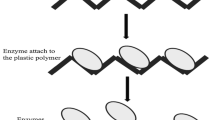Abstract
The total annual volume of mineral wool waste in the 27 European Union countries is expected to increase to 2.5 million tons per year by 2020. Unfortunately, mineral wool wastes are often considered unrecyclable, because their physical characteristics make them difficult to process. In many cases, the problem is caused by the material’s fibrousness. However, no studies have considered comminution methods for mineral wools. The objective of the present study is to investigate how various comminution mechanisms affect mineral wools’ physical characteristics, including appearance, bulk density, and fiber length and width. The study’s results show that compression-based methods (vibratory disc mill and hydraulic press) completely break down mineral wools’ fibrousness, whereas methods based on high cutting speeds affect bulk density and fiber length only moderately. In addition, the present study identifies a rapid method that can be used in a novel way to analyze a large number of mineral wool fibers.









Similar content being viewed by others
References
Müller A, Leydolph B, Stanelle K (2009) Recycling mineral wool waste—technologies for the conversion of the fiber structure part 1. Interceram 2009:378–381
Papadopoulos AM (2005) State of the art in thermal insulation materials and aims for future developments. Energy Build 37:77–86. https://doi.org/10.1016/j.enbuild.2004.05.006
Väntsi O, Kärki T (2013) Mineral wool waste in Europe: a review of mineral wool waste quantity, quality, and current recycling methods. J Mater Cycles Waste Manag 2013:1–11. https://doi.org/10.1007/s10163-013-0170-5
Pranckevičienė J (2011) Impact of mineral wool production waste on properties of sintered ceramics. Dissertation, VGTU leidykla Technika”
Kizinievič O, Balkevičius V, Pranckevičienė J, Kizinievič V (2014) Investigation of the usage of centrifuging waste of mineral wool melt (CMWW), contaminated with phenol and formaldehyde, in manufacturing of ceramic products. Waste Manag. https://doi.org/10.1016/j.wasman.2014.01.010
Cheng A, Lin W-T, Huang R (2011) Application of rock wool waste in cement-based composites. Mater Des 32:636–642. https://doi.org/10.1016/j.matdes.2010.08.014
Hagerman RM (1987) Mineral wool waste cement. Patent
Lin W-T, Han T-Y, Huang C-C et al (2012) Using rock wool wastes as partial replacement of cement in cement-based composites. Adv Sci Lett 8:489–494
Väntsi O, Kärki T (2014) Utilization of recycled mineral wool as filler in wood–polypropylene composites. Constr Build Mater 55:220–226. https://doi.org/10.1016/j.conbuildmat.2014.01.050
Felegi J Jr, Kehrer KP (1990) Composite fiberboard and process of manufacture. Patent
Ali MH (1985) Fire resistant gypsum board containing mineral wool fibers and method. Patent
Cadotfe JE, Cadotfe JE (1970) Production of water-laid felted mineral fiber panels including use of flocculating agent. Patent
Long WJ (1984) Mineral fiber-containing paper for the production of gypsum wallboard. Patent
Talling BLO, Sarudis M (1995) Raw material briquette for mineral wool production and process for its preparation and its use. Patent
Heinelt W (1996) Method and apparatus for treating mineral wool wastes. Patent
Dunster A (2007) Characterisation of mineral wastes, resources and processing technologies—integrated waste management for production of construction material. Case Study: waste mineral fiber in ceiling tile manufacture Report WRT 177/WR0115. http://www.smartwaste.co.uk/filelibrary/Ceiling_tiles_waste_mineral_wool.pdf. Accessed 11 Jan 2017
Yliniemi J, Kinnunen P, Karinkanta P, Illikainen M (2016) Utilization of mineral wools as alkali-activated material precursor. Materials 9:312
Kinnunen P, Yliniemi J, Talling B, Illikainen M (2017) Rockwool waste in fly ash geopolymer composites. J Mater Cycles Waste Manag 19:1220–1227
Müller A, Leydolph B, Stanelle K (2010) Recycling mineral wool waste—technologies for the conversion of the fiber structure, part 2. Interceram 59:39–45
Širok B, Blagojević B, Bullen P (2008) 8—applying the visualisation method to measuring the thickness of mineral wool fibres. In: Mineral wool. Woodhead publishing series in metals and surface engineering, pp 106–112. https://doi.org/10.1533/9781845694456.106
Suopajärvi T, Kekäläinen K, Illikainen M, Niinimaki J (2009) Effect of high intensity treatment on mechanical properties of low consistency pulp. In: Proceedings of TAPPI EPE, pp 1–11
Hosokawa A. HOSOKAWA ALPINE Aktiengesellschaft. https://www.hosokawa-alpine.com/powder-particle-processing/machines/fine-impact-mills-and-classifier-mills/upz-fine-impact-mill-ultraplex/. Accessed 20 Dec 2016
Retsch R (2017) Vibratory Disc Mill RS 200—Retsch—high end fineness and speed. http://www.retsch.com/products/milling/disc-mills/rs-200. Accessed 10 Jan 2017
SFS EN 1097-3 (1998) Tests for mechanical and physical properties of aggregates. Part 3: determination of loose bulk density and voids
SFS EN 1237 (1995) Fertilizers. Determination of bulk density (tapped)
Kekäläinen K (2016) Microfibrillation of pulp fibres. The effects of compression-shearing, oxidation and thermal drying. Doctoral thesis, University of Oulu
Laitinen O, Kemppainen K, Stoor T, Niinimäki J (2011) Fractionation of pulp and paper particles selectively by size. BioResources 6:672–685
Laitinen O, Niinimaki J (2014) Fractional study of the microfibrillated cellulose. Tappi J 13:49–55
Laitinen O, Joensuu I, Niskanen T, Niinimäki J (2014) Analysis of the external fibrillation. Int Papwirtsch 57:46–52
Karinkanta P, Laitinen O (2017) Use of tube flow fractionation in wood powder characterization. Biomass Bioenergy 99:122–138
Yilmaz S, Özkan O, Günay V (1996) Crystallization kinetics of basalt glass. Ceram Int 6:477–481
Achchaq F, Djellab K, Beji H (2009) Hydric, morphological and thermo-physical characterization of glass wools: from macroscopic to microscopic approach. Constr Build Mater 10:3214–3219
Acknowledgements
This work was conducted under the auspices of the Geodesign Project, supported by the Finnish Funding Agency for Technology and Innovation (Tekes) and various companies (Boliden Harjavalta Oy, Destamatic Oy, Fortum Power and Heat Oy, Paroc Group Oy, Saint-Gobain Rakennustuotteet Oy, and Suomen Erityisjäte Oy). Jarno Karvonen, Elisa Wirkkala, and Jani Österlund are acknowledged for their contributions to the laboratory analyses. Special thanks to Pontus Lindberg (Paroc Group Oy) for his valuable advice on the comminution experiments.
Author information
Authors and Affiliations
Corresponding author
Electronic supplementary material
Below is the link to the electronic supplementary material.
Rights and permissions
About this article
Cite this article
Yliniemi, J., Laitinen, O., Kinnunen, P. et al. Pulverization of fibrous mineral wool waste. J Mater Cycles Waste Manag 20, 1248–1256 (2018). https://doi.org/10.1007/s10163-017-0692-3
Received:
Accepted:
Published:
Issue Date:
DOI: https://doi.org/10.1007/s10163-017-0692-3




